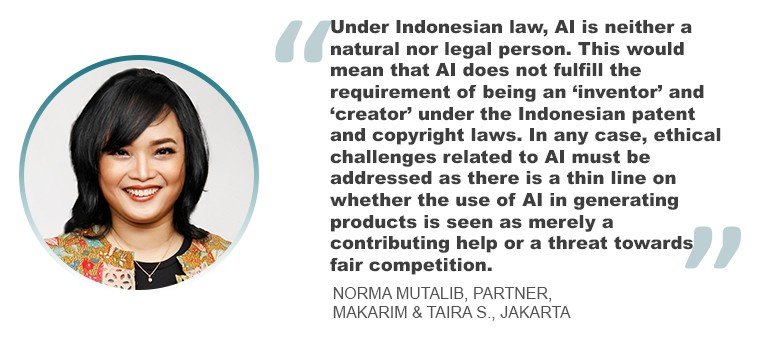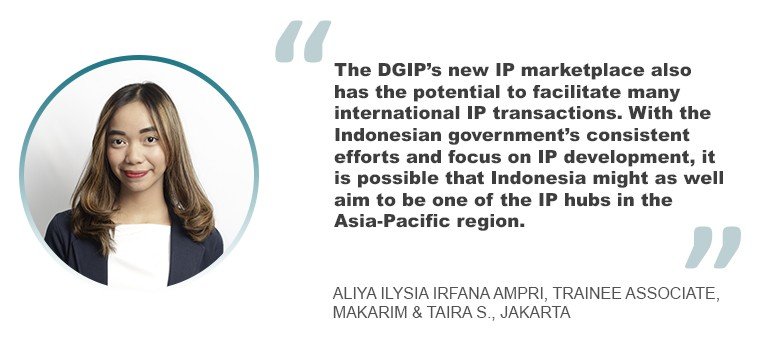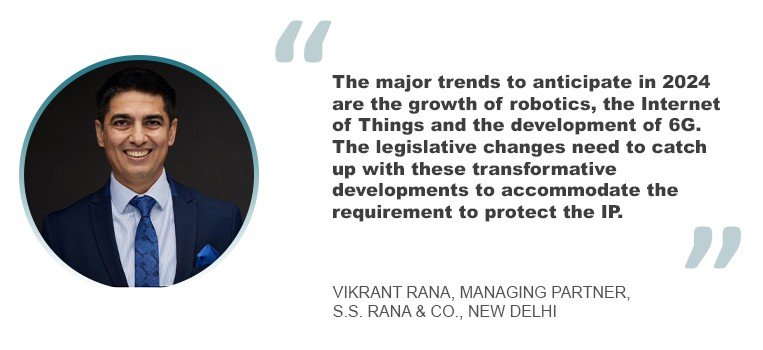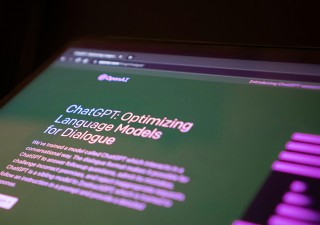Navigating the intellectual property frontier: Key trends shaping 2024’s IP field
31 October 2023

This year marked a pivotal chapter in the development of intellectual property. Efforts were made to harmonize patent laws globally and discussions on copyright in the digital age gained prominence. Excel V. Dyquiangco discusses the challenges in IP enforcement, counterfeiting, and legal complexities arising from technologies amidst this.
In 2023, the intellectual property landscape underwent big changes due to technological advancements, globalization of creative industries and increased awareness of the need to protect intellectual assets. This year a combination of legal, technological and societal factors reshaped how people perceive and handle IP. From advancements in AI-driven content creation to new global agreements on patent standards, 2023 marked a pivotal chapter in IP’s development, paving the way for the future where innovation and creativity thrive despite the challenges in the digital age.
There were also developments in diagnostics, vaccines and treatments for contagious diseases. Following the Covid-19 pandemic, researchers used templates from the fight against Covid-19 to quickly develop diagnostic tools, vaccines and treatments for other illnesses. These developments were further fueled by the global accessibility of research machinery, laboratory equipment, reagents and supplies needed by the scientists to make further studies in their respective fields. This increased availability of resources, along with trained personnel to operate the equipment, has led to a significant growth and rapid development in research in these areas.
Further, coming from the online world of the pandemic, data-driven decision making has been seen to spread its roots even more. Big data, data consolidation, data exchange and reliance on data for decision-making made its mark in 2023.
There were also decisions, directions, consultations and discussions on pressing issues between IP and technology. For example, Hermès obtained a permanent injunction against the sale of Rothschild’s MetaBirkin NFT, and fake information generated by ChatGPT has been involved in a U.S. court case. Additionally, efforts were made to address offline activities, such as Singapore increasing border enforcement against counterfeits. IP laws, as the forefront area of practice, continue to evolve in response to changing needs.
Towards global patent harmonization, there have been ongoing efforts to harmonize patent laws and procedures across different countries to simplify the process for inventors seeking international patent protection. Initiatives like the Patent Cooperation Treaty (PCT) and European patent, also known as the unitary patent, aim to streamline patent applications and enforcement. The establishment of Unified Patent Court (UPC), a shared court for 17 EU countries, is a watershed event in this regard.
The ongoing evolution of digital media and the internet has also led to discussions about copyright in the digital age. Issues on fair use, content sharing platforms and digital content protection have been central to these discussions. Disputes over trademarks in domain names, social media handles and online branding have become increasingly common as businesses expand online. There has been a clearer explanation of trademark challenges in the Indian cyberspace in the case of Samridhi Electronics v. Flipkart Internet. It was held that the intermediary liability does not extend to taking actions against the infringing entities only on basis of a complaint.
The ongoing wars over patents in the smartphone and robotics industries are also an interesting development. This further highlights the trend of IP development in 2023.
Meanwhile, the Indonesian government faced challenges in implementing new innovations and programs related to its 2023 theme, “The Year of Trademarks / 2023 Tahun Merek”, and continuously responded to the growth of digital innovations and technology. On the regulatory framework, the patent bill and industrial design bill is now a part of the 2023 National Legislation Program. The industrial design bill supports industrial designs being used as assets for fiduciary-based guarantees, the establishment of an industrial design appeal commission and creating the mechanisms for industrial design applications through international registration.
On the other hand, Indonesia’s patent bill focuses on addressing challenges and increasing the patent registrations by expanding opportunities for patents in all fields of technology and reducing fees for micro, small and medium enterprises (MSMEs).
IP protection for AI products
According to Norma Mutalib, a partner at Makarim & Taira S. in Jakarta, one of the year’s IP trends is the debate on IP protection towards artificial intelligence-generated products. Although this discussion started in 2022, she believes it will remain relevant in 2024, as there will continue to be more technological innovations and creations.
“The idea of IP protection is to establish a legal right over the creative efforts of a mind or intellect. As AI continues to grow and advance significantly, it can now independently create a work supposedly protected by IP, whether in the form of art, writing or design,” she said. “Discussions then arise on whether IP protection can be given towards AI-generated products.”

However, answering this question is not easy. Whether AI is used alone and without any human involvement to create a work or if the AI is merely used as a tool to support the creation of the work will still need to be determined.
“Under Indonesian law, AI is neither a natural nor legal person. This would mean that AI does not fulfill the requirement of being an ‘inventor’ and ‘creator’ under the Indonesian patent and copyright law,” she explained. “In any case, ethical challenges related to AI must be addressed as there is a thin line on whether the use of AI in generating products is seen as merely a contributing help or a threat towards fair competition.”
Conversely, Indonesia’s IP-Based Financing Scheme,” as regulated under GR 24/22, provides significant opportunities for enterprises to leverage use their IP assets as the scheme provides a new financing alternative and contributes to job creation.
Mutalib said that this scheme confirms the role of intellectual properties as intangible assets. “IP is still valuable and can be utilized as security for receiving loans,” she said. “This will be beneficial for creative economy enterprises that do not have tangible assets valuable enough to be used as collateral. However, this would only work towards creative economy enterprises that have a valuable IP registered in the Directorate General of Intellectual Property (DGIP). Due to this, the IP-Based Financing Scheme is also seen as an incentive for enterprises to register their IP.”
Aliya Ilysia Irfana Ampri, a trainee associate at the same firm in Jakarta, added that the forms of financing under the scheme include fiduciary guarantee over IP, contract in creative economy activities and the claim rights in creative economy activities. As per the Indonesian fiduciary law, IP needs to be valued, and the valuation should be included in the fiduciary deed. She said this scheme can provide benefits to IP valuators and create new job opportunities in Indonesia, as this service will be significant.

She continued: “In addition, the DGIP’s new IP marketplace also has the potential to facilitate many international IP transactions. There is always a possibility that the function of the marketplace will continuously grow to support the needs of enterprises. With the Indonesian government’s consistent efforts and focus on IP development, it is possible that Indonesia might as well aim to be one of the IP-hubs in Asia-Pacific Region.”
Business and AI challenges
Despite the growing awareness and efforts of artificial intelligence and intellectual property, counterfeiting remains a primary concern for many multinational corporations when seeking IP protection in the Asia-Pacific market, including countries such as India, Indonesia, the Philippines and China.
To overcome these challenges, Poyiu Cheung, an associate at Ellalan in Hong Kong, stressed the importance of enforcing intellectual properties by registering them in relevant jurisdictions and collaborating with local authorities and platforms.
“Legal developments have a lot to catch up on in response to changing needs. In cases where relevant official policies have not been implemented – for example, China has yet to announce the official classification of trademarks concerning the metaverse, virtual goods and services or cryptocurrency – multinational corporations should consider a more proactive approach in at least filing for potential classes – notably Classes 9, 35, and 41 – in the interim lest their marks are taken by trademark squatters,” she said. “We also look forward to seeing the different approaches each jurisdiction may adopt towards artificial intelligence, notably from the copyright perspectives.”
With this, the IP laws in the Asia-Pacific region have been constantly tested and challenged by recent technological advancements. This is certainly not the first time when IP laws are used to deal with legal complexities from technologies.
Pending legislative efforts and court decisions, practitioners have tried to tackle various legal issues under the existing framework. For example, IP authorities have generally agreed that virtual goods are classified under Class 9, which has long been used to deal with new filings because of technological changes, such as mobile apps.
“The present classification would flood the already crowded with a wide spectrum of virtual goods specified thereunder,” said Cheung. “In Japan, for example, in the case of well-known or famous trademarks, owners may rely on Unfair Competition Prevention Act. As the act only deals with tangible goods, it is now being partially amended such that intangible goods will also be covered. There are also initiatives in response to calls for legal updates. For example, in China, the National Intellectual Property Administration issued a draft guideline on patent examination of AI-related inventions. The draft guideline clarifies the patentability criteria, disclosure requirements, novelty assessment and inventive step evaluation of AI-related inventions.”
It is the same in the Philippines. Businesses face challenges in cybersecurity and data privacy due to online sales and data-driven decisions. This is particularly important for protecting trade secrets and data.
Ma. Sophia Editha C. Cruz-Abrenica, a senior counsel at Villaraza & Angangco in Manila, said continuous improvement of information security systems is thus necessary to get around this constant threat.

“Demarcation and ownership of IP in AI-generated output is also a continuing debate given current circumstances and beliefs,” she added. “Who owns data or can data even be owned? What about the output from such data? Is AI-generated work patentable or registrable as intellectual property? Who owns the AI-generated output? Can AI be considered as inventor or intellectual property creator? If not, then who is the inventor or creator if such intellectual property? What about the data used as basis for these AI-generated output, is there a threat to or infringement of their intellectual property?”
Cruz-Abrenica said these and many more questions will be subject of discussions of IP legislators and judges for the coming years, as there seems to be no unified answers coming up from the various jurisdictions currently facing these issues.
The global reach of data-driven businesses also poses a challenge since intellectual property laws and rules are different for each jurisdiction.
“These have been resonating themes ever since the internet was formed. Now there is the added dimension of IP riding on the wave of these issues: What are the governing rules pertaining to IP when the creation, production, dissemination of which are in different jurisdictions? Who are covered by these rules? How are these rules to be enforced? These questions must again be faced, owing to the multi-jurisdictional nature and reach of recent technologies such as blockchain, NFTs and AI, amongst others,” she said.
With the Philippines seen as the next blockchain capital for its use of technology in different fields, the legislation is now underway to address the lack of rules governing blockchain technology and cryptocurrency. The legislation recognizes that the use of this technology in governance and economics has not yet been fully explored. Currently, issues pertaining to NFTs refer to disparate laws such as the IP Code, Securities Regulation Code, Anti-Money Laundering Act, National Internal Revenue Code and the Consumer Act, depending on the relevance of these laws.
In order to address labour transformation issues that may be caused by the increased use of AI in various sectors, the Philippines recently passed RA 11927, an act to improve the country’s digital workforce. This act establishes an Inter-Agency Council to create a roadmap for developing digital skills for future jobs, considering the fast-paced digitalization and advancements in technologies like artificial intelligence.
In the field of biotechnology, the Intellectual Property Office of the Philippines (IPOPHL) recently came up with examination guidelines for biotechnology patent applications. Noteworthy is the restriction on patenting applications wherein stem cells are derived through destruction of the fetus or embryo since these are against morality.
“The biotechnology guidelines also address other aspects such as patenting microorganisms, nucleic acids, polypeptides, antibodies, stem cells, plants and animals,” said Cruz-Abrenica. “They clarify with specificity what biotechnological applications may or may not be granted patent protection, for the guidance of the examiner and the applicant and researchers alike. It is seen that the guidelines will be further refined as biotechnological research develops further.”
Back to normal: IP enforcement and protection
While the Covid-19 pandemic disrupted many businesses globally, IP practices, including IP prosecution and enforcement, were generally able to nimbly pivot and adopt new ways of doing business. In India, for example, the Indian IP Office and the judiciary quickly adapted to the drastically changed circumstances and integrated administrative and digital changes. This helped in efficiently addressing time delays and other hindrances.
According to Nihit Nagpal, an associate partner at S.S. Rana & Co. in New Delhi, few hindrances were faced during the active period of pandemic, and there were few delays in IP processes due to lockdowns, reduced staff and remote working.
“To some extent, this affected the processing of patent, trademark and copyright applications, as well as the resolution of IP disputes for a rather very short duration as IP offices and courts were very quick in incorporating digital transformations and incorporating modes of virtual hearings and virtual conferencing,” he said. “Some impediments were also created due to the inability to conduct physical inspections, and the enforcement agencies and customs officials faced challenges in inspecting and seizing counterfeit goods and enforcing IP rights. Online IP infringement, such as trademark and copyright violations on ecommerce platforms, also increased as more consumers turned to online shopping.”
But he was quick to say that despite the initial limitations post Covid-19, IP enforcement and protection is bouncing back and gaining momentum. The World Intellectual Property Organization has been actively involved in spreading more awareness about the IP rights with the launch of the WIPO Global Awards and Global Innovation Index.

“Post-pandemic, there has been a surge in the IP registration of pharmaceuticals and medical devices,” he said. “We have also seen the mushrooming of several home-grown brands and businesses keen to protect their IP. There has also been a proliferation of digital ways to distribute content online. With the establishment of the Digital Single Market Directive and the EU Intellectual Property Office (EUIPO) Observatory by the European Union, there is renewed interest in the protection of IP rights.”
He added: “The primary chances and challenges post Covid-19 are in amending IP rules to include automation, digitalization and adaptability. Hence, considering the status of IP enforcement and protection, we are of the view that yes, we are back to normal.”
Regarding new trends or legal changes in the Asia-Pacific region that businesses and IP practitioners should know about in 2024, Vikrant Rana, a managing partner at S.S. Rana & Co. in New Delhi, said there have been various legislative developments to make IP processes more efficient, increase IP awareness, promote commercialization and improve enforcement. In India, this includes the 2018 amendment to Intellectual Property Rights (Imported Goods) Enforcement Rules, 2007, where patents were removed from the scope of customs protection.

Under the new system of custom recordal, the owners of copyrights, designs and trademarks can record their registered IP rights with Indian customs authorities and seek enforcement actions for any related counterfeit activity. This measure is crucial to protect the IP rights in Asia-Pacific region, thanks to its widespread use of grey market goods and cross-border movement of counterfeit goods.
“More recently, in the Asia-Pacific region, the launch of IPOS Digital Hub in Singapore is an important development that would ease the IP registration process and increase the ease of doing business,” he said. “The major trends to anticipate in 2024 are in the growth of robotics, the Internet of Things and the development of 6G. With the rise of augmented reality or mixed reality, self-driving automobiles, AI usage in providing healthcare, SMART cities, among others, the legislative changes need to catch up with these transformative developments to accommodate the requirement to protect the IP.”
He added: “The draft AI Law passed by the EU – which regulates the usage of artificial intelligence and the acceptable levels of risk that can be expected – is important legislation which identifies with the trends of technology. The balanced and sustainable IP ecosystem is important to protect and promote innovation in the Asia-Pacific region. On the similar footing as the EU AI Law, WIPO is expected in 2024 to engage in conversation about the impact and consequences of AI for IP.”
The Indian government has also proposed some significant amendments to the Patent Rules of 2003; and the passage of the rules will bring about changes in patent filing and prosecution compliances.






